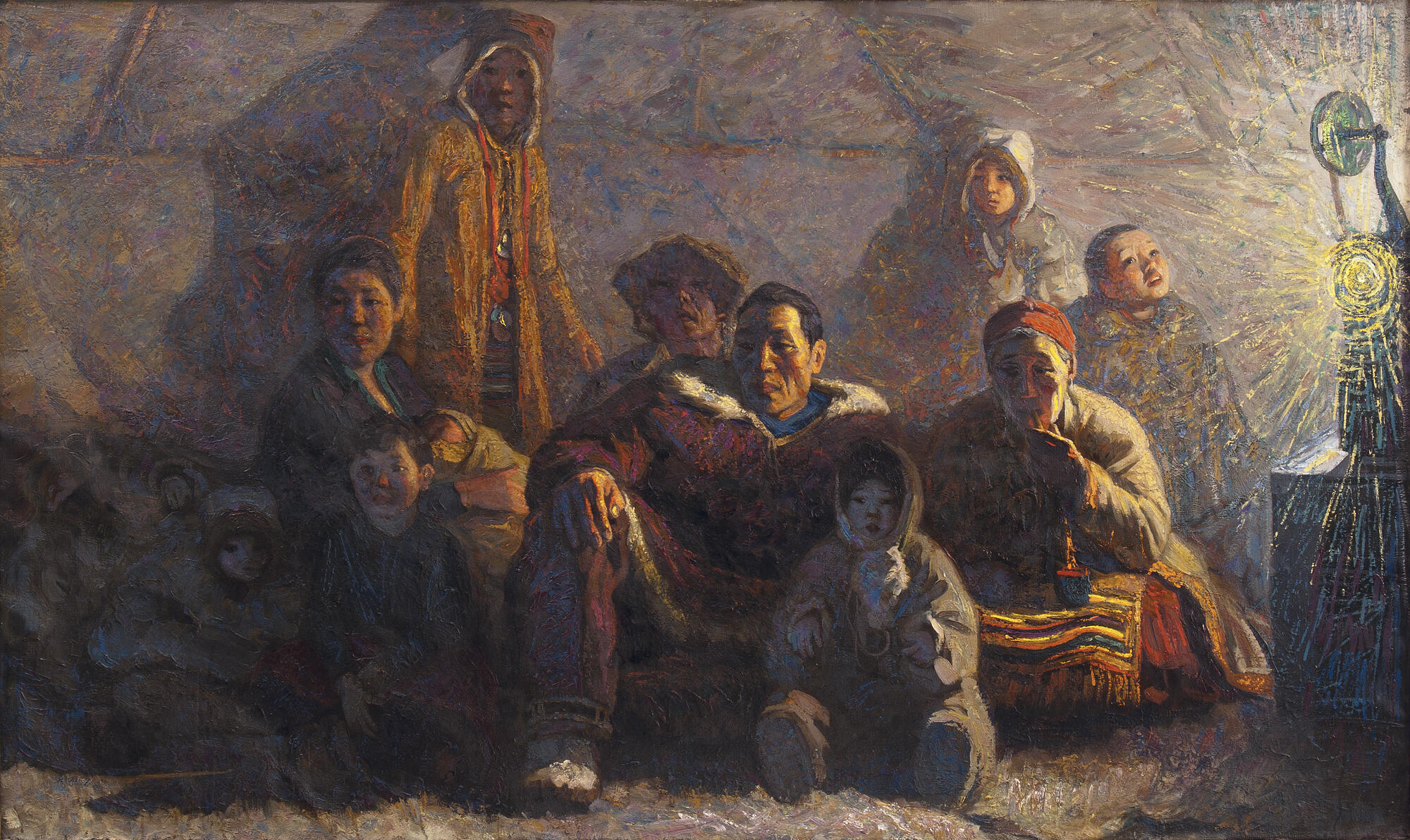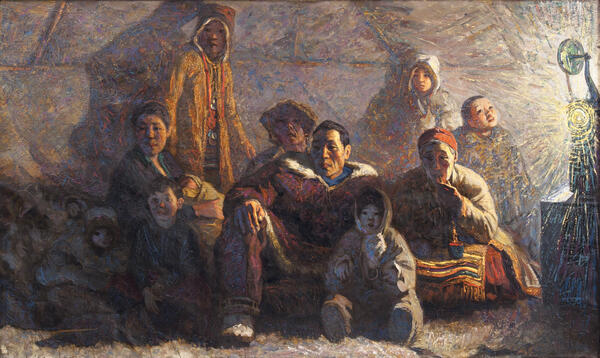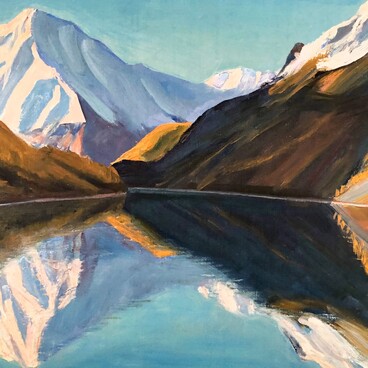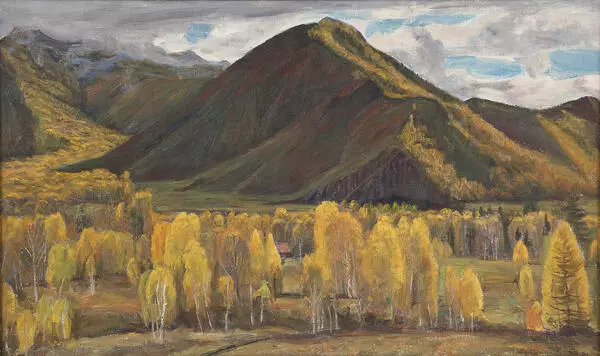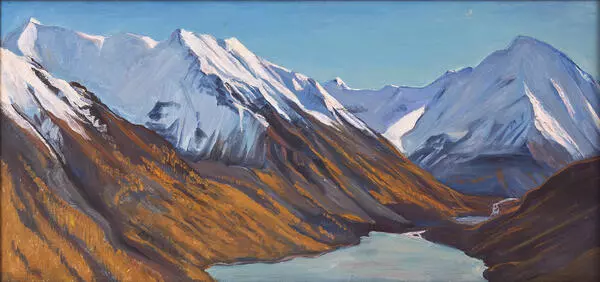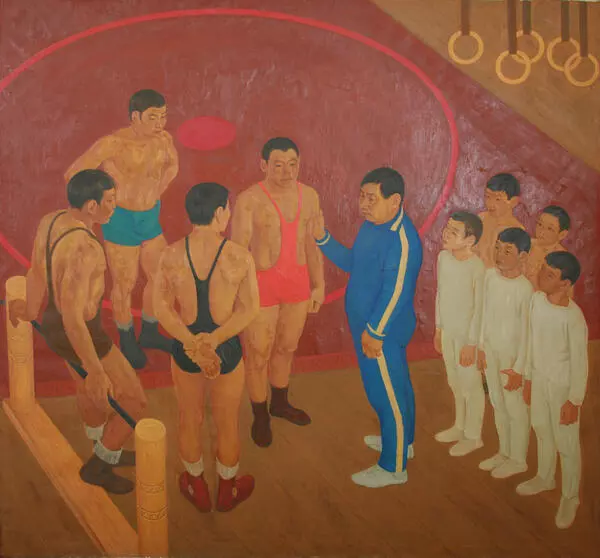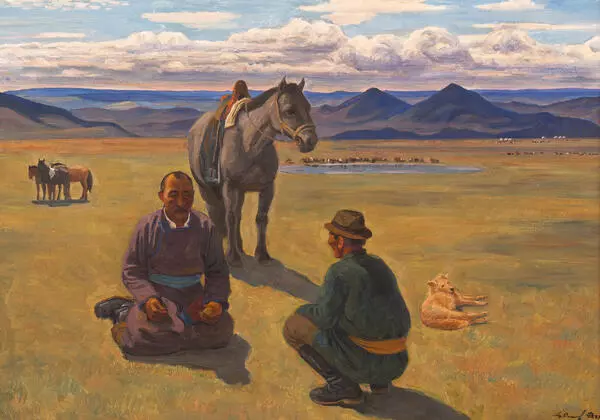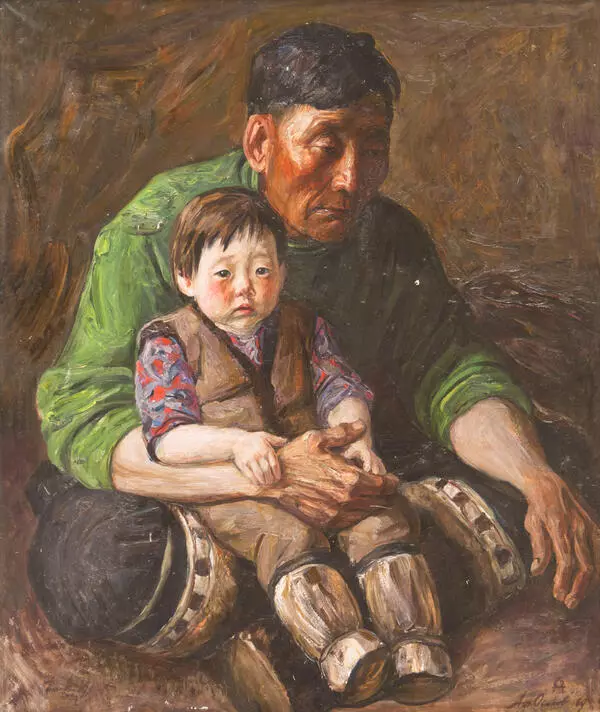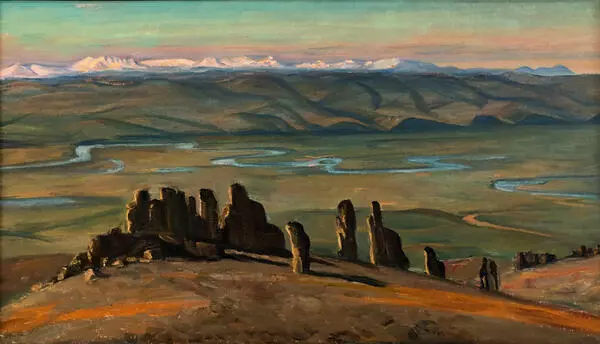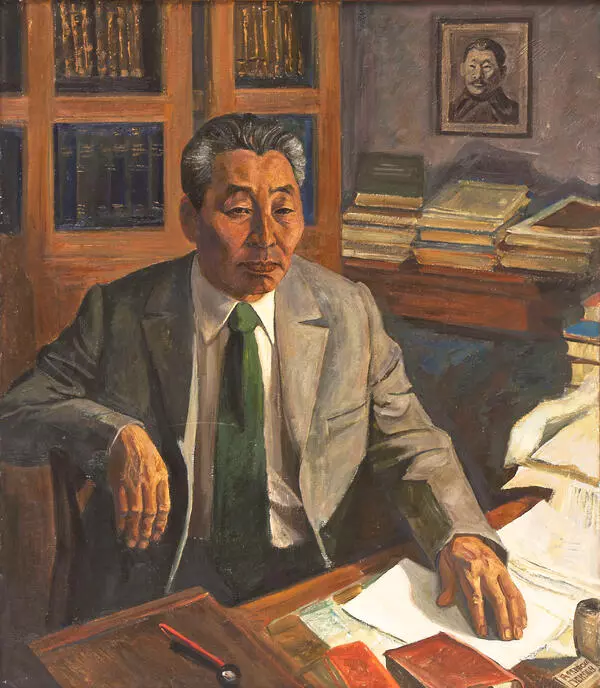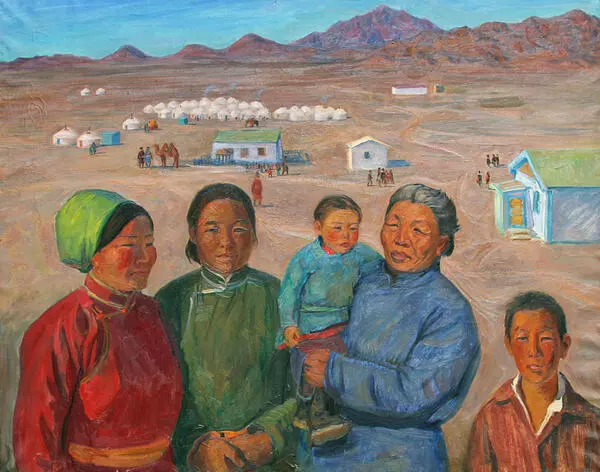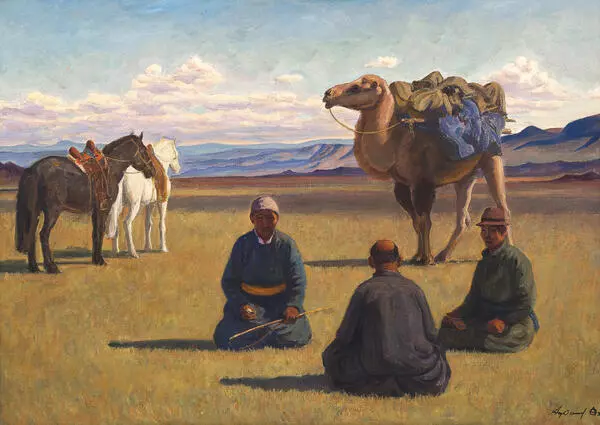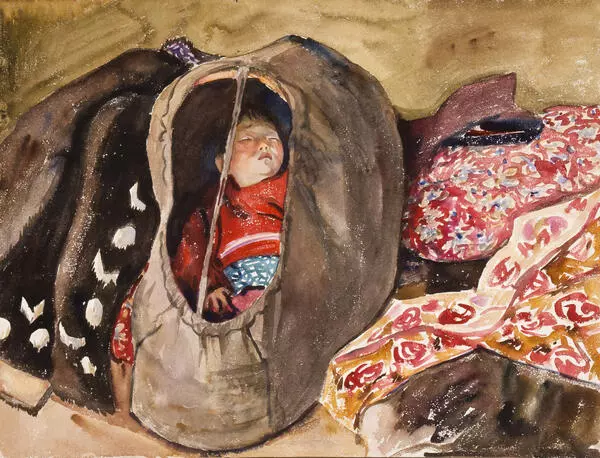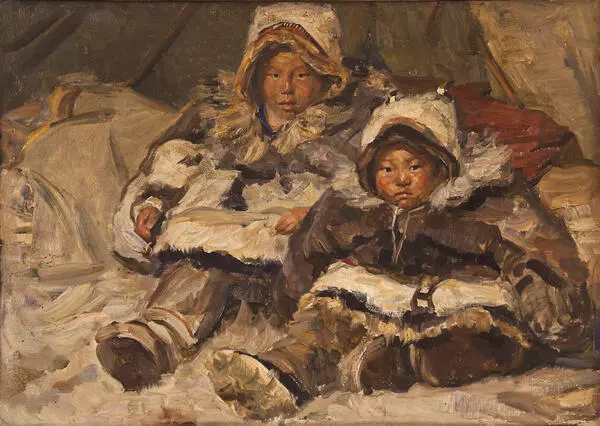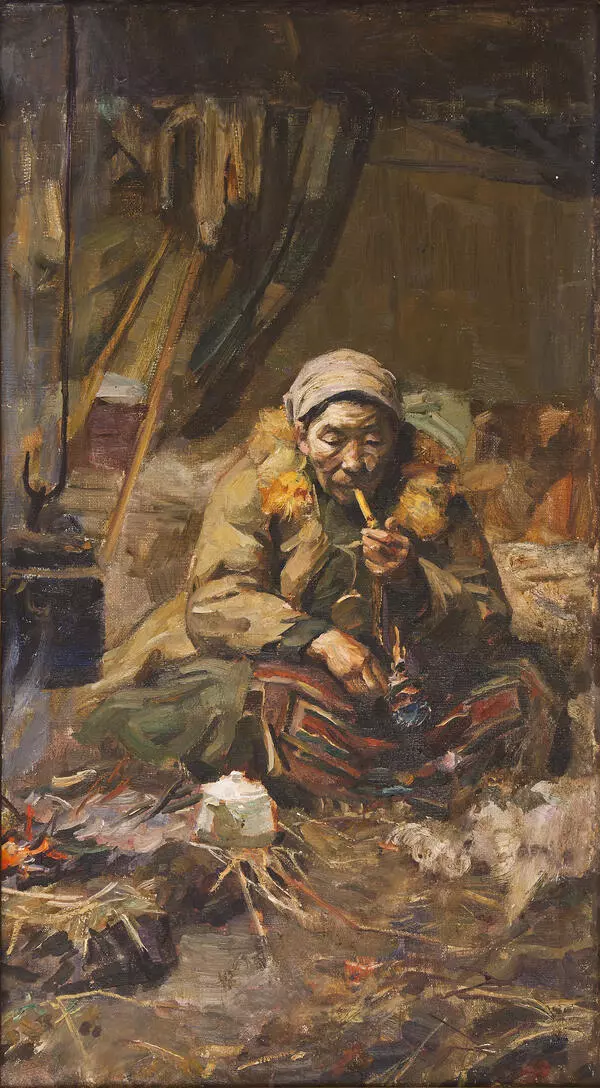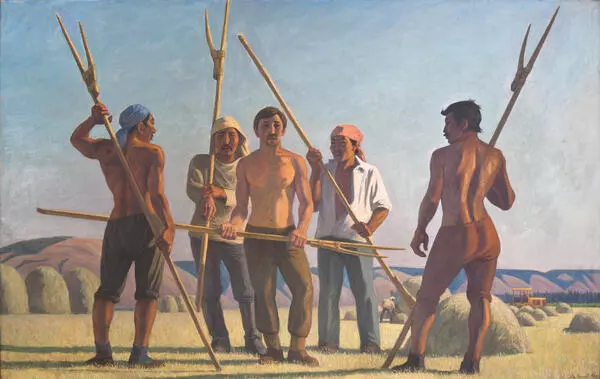The National Art Museum of the Republic of Sakha (Yakutia) stores the works of Afanasy Osipov who is the Yakut painter, People’s Artist of the USSR, and winner of the Ilya Repin State Prize of the RSFSR. His paintings are kept in the State Tretyakov Gallery, the State Russian Museum, and other large collections.
The painting composition “Cinema in Yaranga” was made in 1963, shortly after graduating from the Moscow State Institute named after V.I. Surikov, when the artist, like his young colleagues, went on a trip to the Northern regions of Yakutia. Artists have captured the harsh nature of boundless tundra, everyday worries of Evens, Evenks, Yukagirs and Chukchi, as well as their dreams and thoughts about the world. Afanasy Osipov went on a long journey with the sole purpose of getting closer to understanding the life of reindeer herders. As the artist himself recalls: “In the Nizhnekolymsky District, I roamed with reindeer herders. After that I made the paintings “Cry”, “Holiday of Reindeer Herders”, and “Cinema in Yaranga”, in which I tried to convey the inner world, hopes, and aspirations of the northerners.’
The picture shows the close interweaving of the traditional way of life with new technologies. The spread of cinematography, which replaced static photographs, allowed people throughout the world to learn the history and culture of other nations. Boxes with film were brought to the Northern settlements by helicopter, and in one of the portable dwellings they were shown to all the inhabitants of the settlement.
The multi-figure canvas captures the moment of a collective film viewing. Enchanted by the magic of a Soviet projector, people are watching the projection on the walls of yaranga, a traditional Chukchi dwelling in the form of a large polygonal tent. The color sound of the painting is lyrical and echoes the shady atmosphere of the quiet comfort depicted, while the light is transmitted by the author in soft semitones. Despite the cohesive focus of the characters in the composition, the artist thoughtfully individualizes their characters, namely: the calmness of a young mother with a slumbering child wrapped in warm clothes, a light smoke coming from an old man in thought, and the distracted gaze of a child trying to understand the essence of phenomena.
The painting composition “Cinema in Yaranga” was made in 1963, shortly after graduating from the Moscow State Institute named after V.I. Surikov, when the artist, like his young colleagues, went on a trip to the Northern regions of Yakutia. Artists have captured the harsh nature of boundless tundra, everyday worries of Evens, Evenks, Yukagirs and Chukchi, as well as their dreams and thoughts about the world. Afanasy Osipov went on a long journey with the sole purpose of getting closer to understanding the life of reindeer herders. As the artist himself recalls: “In the Nizhnekolymsky District, I roamed with reindeer herders. After that I made the paintings “Cry”, “Holiday of Reindeer Herders”, and “Cinema in Yaranga”, in which I tried to convey the inner world, hopes, and aspirations of the northerners.’
The picture shows the close interweaving of the traditional way of life with new technologies. The spread of cinematography, which replaced static photographs, allowed people throughout the world to learn the history and culture of other nations. Boxes with film were brought to the Northern settlements by helicopter, and in one of the portable dwellings they were shown to all the inhabitants of the settlement.
The multi-figure canvas captures the moment of a collective film viewing. Enchanted by the magic of a Soviet projector, people are watching the projection on the walls of yaranga, a traditional Chukchi dwelling in the form of a large polygonal tent. The color sound of the painting is lyrical and echoes the shady atmosphere of the quiet comfort depicted, while the light is transmitted by the author in soft semitones. Despite the cohesive focus of the characters in the composition, the artist thoughtfully individualizes their characters, namely: the calmness of a young mother with a slumbering child wrapped in warm clothes, a light smoke coming from an old man in thought, and the distracted gaze of a child trying to understand the essence of phenomena.
